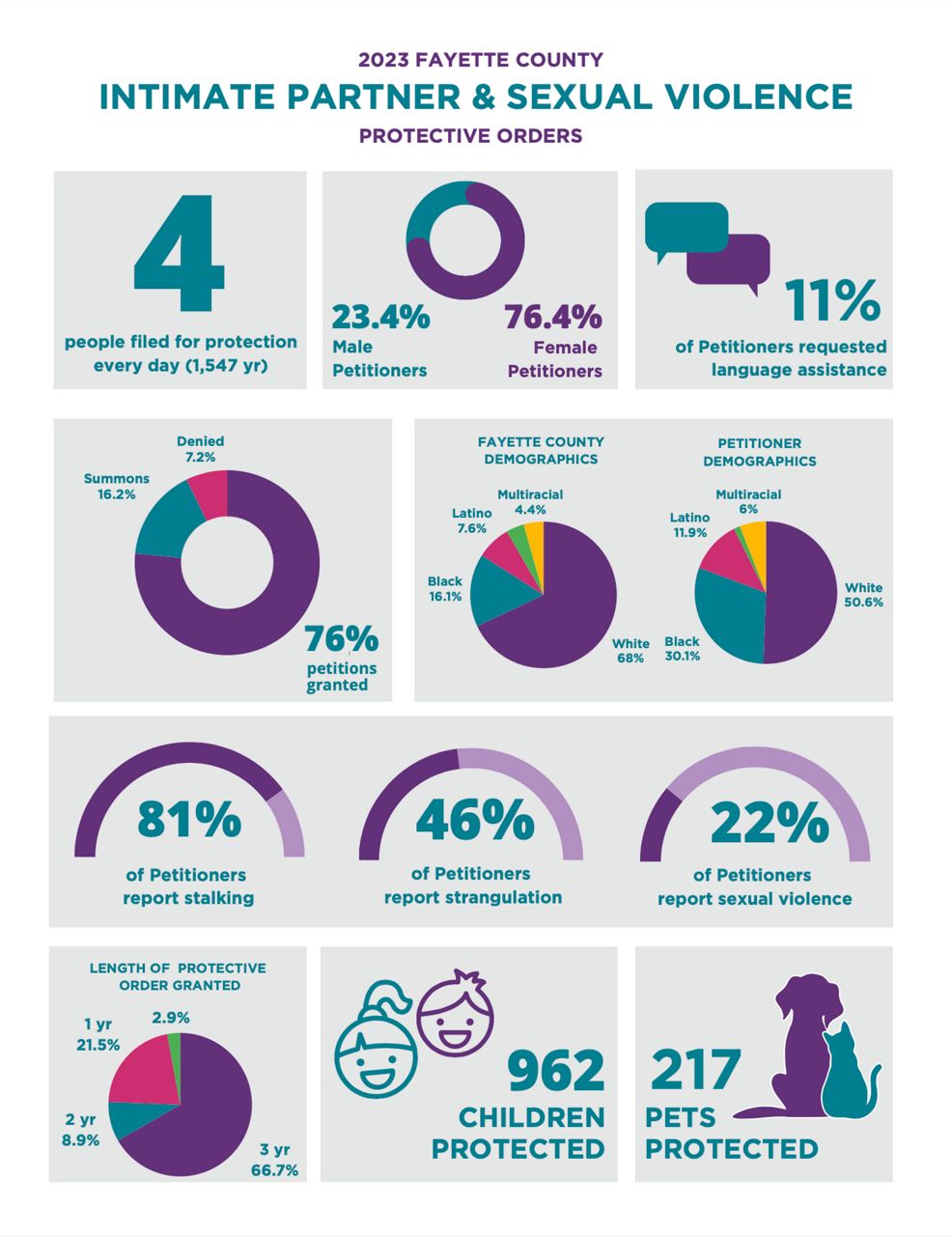LEXINGTON, Ky. — On average, four people filed a protective order each day in Lexington last year, according to a report on protective orders in Fayette County.
The report also found some people are waiting months for a judge to rule on their petition.
Stephanie Theakston with Fayette County’s Domestic and Sexual Violence Prevention Coalition said the report is the result of months of work. It breaks down why people are filing such orders and if they were granted one.
“We have realized that over the past several years, the time between filing for a petition and actually receiving a hearing for a protective order has tripled,” Theakston said.
The report found, on average, people wait nearly two months to see a judge who can approve or deny their request. In 2009, the report found people waited on average 17 days.

Last year, about 40% of Fayette County cases went before a judge. The remaining petitioners were granted an emergency or temporary protective order. Theakston said cases are put on the family court docket when more information is needed to decide if an order is granted.
Dianne Fleet, assistant director of the Greenhouse17 emergency shelter, said she finds the longer waits concerning, as it puts additional stress on survivors.
“So instead of being worried for two weeks, now you're worried for two or three months maybe," Fleet said. "I think that takes a great toll, and it's hard to move forward with a plan if you don't know the immediate result of that protective order."
Theakston pointed to multiple factors that are leading to longer hearing wait times and denial of orders, which happened to nearly 400 people last year.
One issue, Theakston said, is inconsistent interpretations of imminent threat, the most common reason cited for orders not being granted.
“We have a different definition of imminent threat than perhaps from a legal perspective," Theakston said. "But research tells us that if domestic violence has occurred, it's more likely to occur in the future. I mean, that's the No. 1 indicator for future harm."
The report found 76% of protective orders were ultimately granted. Three-quarters of petitioners were female, and half of petitioners reported being strangled.
In total, 1,547 orders were requested last year in Fayette County.
The coalition’s report provides several recommendations for resolving this issue and others. Fleet said having solid data like this will be a great resource for spearheading change.
“I think there's lots of solutions, and I hope people look at this report as a foundation for solutions to be made," Fleet said. "That's what I hope. I hope it's not a 'gotcha' report; I hope it's the other."
While the protective order report highlights several issues, there are some positive takeaways. The report found nearly 1,000 children were protected last year, and more than 200 pets were, too.



